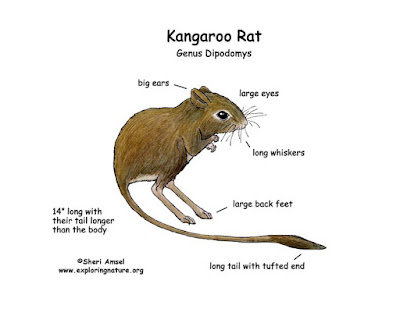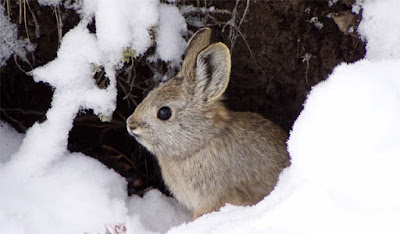Point Arena Mountain Beaver- Michael Ahn
Point Arena Mountain Beaver
Michael Ahn
 |
| Photo |
The Point Arena Mountain Beaver is a short, stout beaver with a cylindrical figure. It is only about 1 foot long and ranges from 2-4 pounds. The beavers have small eyes, rounded ears, and a stumpy tail. They contain massive, hard skulls and forepaws with opposable thumbs and long curved claws, all used to make digging easier. Their primary colors are a blackish color to separate them from other mountain beavers. They live in underground burrows in areas with soil easy for excavation. Since they are underground for most of the time, they only surface to eat succulent plant foods and drink water.
Most of the beavers live in on the Pacific coast of western Northern America, specifically British Columbia, California, Oregon, and Nevada, but primarily California. They are only to be known in a small area of 60 kilometers squared in Mendocino County, California. The beavers have a very low reproduction and they are monoestrous, which means the females only have one reproductive cycle per year.
Listing
The Point Arena Mountain Beavers were first listed on December 12, 1991. They were federally listed as endangered under the Endangered Species Act and are considered a mammalian species of special concern by the state of California.
Threats
The main reason that the beavers were listed
endangered was because of their dangerously low population. The beavers are
known to have very few populations, but also have very few individuals within
those populations. Also, their low reproductive rate doesn’t help their
problem. The main threats to the beavers are mostly from human activity. Human
threats include: degradation from land development, grazing, and timber
harvest. Some natural threats include alien plant species invading their land
and cause poisoning.
 |
| Photo |
Recovery Plan
 |
| Photo |
The primary recovery plan for the Point Arena Mountain Beavers was
established on July 2, 1998. The objective of the plan was to down-list threats
and delist the Point Arena Mountain Beaver as a whole. The first part of the
plan was to set 16 populations aside, where each population would have 50 acres
of suitable land to themselves, and at least 25 acres would be habituated. The
recovery plan would be dismantled when at least 30 populations are protected,
there are at least 4 beavers for every 2 acres, and the population would be
only increasing.
 |
| Photo |
We can protect the existing mountain beaver
populations in order to prevent further extinction. Do this by protecting their
home environments and follow management plans and rules. We can also be
actively searching for a new home for the beavers or establish boundaries on
the homes they have already. The final solution would be for all of us to do
our own research to find out how to better protect these special, endangered
species.
Resources




This is a great analysis of the Point Arena Mountain Beaver recovery plan! The one thing I think could use further work is the description of "what should we do?". The things mentioned in this section seem pretty vague it would be more effective if you could provide specific ways in which individuals can help in a realistic sense. Connect this issue to people's everyday lives and how that is affecting the species. - Luany Albarracin Leone
ReplyDeleteGreat choice in descriptive words throughout your whole recovery plan, there was a distinctive tone. I liked how to wrote out the "Recovery Plan" section in complete sentences, rather than in bullet points, it made it simple to follow along. One suggestion that I have is to include a specific habitat that we should be on the lookout for in the "What Can We Do?" section. Maybe even include a specific organization or educational group that provides us with the initiative in getting involved with helping these beavers. In the "Threats" section you mentioned that timber harvesting was one of the main threats for beavers. Sustainable forestry could have been another solution that you provided. This loops back to what we had discussed in class about sustainable palm oil for orangutans and a direct means of awareness for your audience.
ReplyDelete-Sarah Bach
This is a good report of the point area mountain beaver. You did a good job with the descriptive words you chose in the recovery plan. I found it interesting that the recovery plan focuses on the populations and not as much on the habitat fragmentation. I think some areas could have been a little more thorough but touched on all of them. But overall well done. -Karah Bengs
ReplyDeleteI liked the easy to read nature of your blog and its informative tone. Also, the specificity of your recovery plan made it easy to visualize. I think I would like to know a little bit more about what we can do specifically, and maybe about how these creatures are doing currently. Other than that, I liked your blog and thought it was well written, with an effective use of visuals! -Lucas Bartell
ReplyDeleteI thought your blog was very interesting and easy to follow. I spend a lot of time along the Pacific west coast as I am from Washington and frequently visit Oregon, so I will be on the lookout for these beavers! -Haley Baquian
ReplyDelete